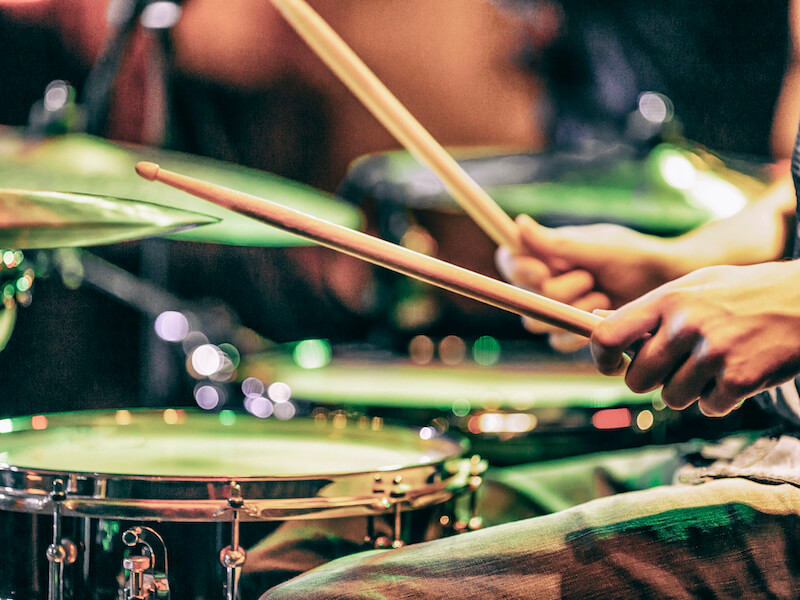
Musicians are cool! They bring so much joy to our lives with their songs. But music is a lot more powerful when it’s loud, and that can be a hearing hazard. The musicians themselves are at an increased risk of hearing damage since they are exposed to loud music nearly every day.
As you grow older, you’ll still want to be able to enjoy your favorite music whether you’re a musician or not. For musicians, protecting their hearing is the key to a lengthy and successful career. Hearing protection is also key to a lifetime of musical enjoyment for everybody.
Sometimes it can be surprising how loud music can get
If you ask the majority of individuals if a jet engine is loud, they’ll likely say yes.
Is music really that loud? If you ask somebody whether an acoustic guitar or a lone violin is loud, they may not reply so quickly. Imagine their surprise when they discover the reality: that music is indeed loud! Your ears can even be damaged by classical music which can reach fairly loud volumes.
Sounds louder than 90 dB can be created by a violin, for instance. A leaf blower is about this noisy. To put that into context, the European Union laws dictate that any work environment louder than 85 dB will require the use of ear protection.
And if you’re working with music day in and day out, continuous exposure to that sort of volume, especially without hearing protection, can seriously harm your hearing over time.
How can you protect your hearing?
Okay, musicians who want to preserve their hearing for years to come need to protect their ears. So what can musicians do to safeguard their hearing and still enjoy the music they love so much?
Well, here are a couple of simple things musicians can do:
- Track your volume: Everybody remembers the old saying “knowledge is power”. So it makes sense that you should always know what levels of sound you’re exposing your ears to. Sometimes, this is as simple as keeping track of your volume settings on amps and receivers. But you can also buy a volume meter app for your cellphone to make it easy to track the real-world volume levels your ears are encountering from day-to-day. You will need to make a few changes if the meter regularly detects volumes above 85 dB.
- Take breaks: Your ears are like any other part of your body: they can become exhausted and will frequently benefit from rest. So give yourself “hearing breaks” regularly. In this way, noises won’t overwhelm and harm your ears. Regarding hearing, how long you’re exposed is nearly as significant as how high the volume is. Taking breaks can be the difference between just enough stimulation and too much!
Wear ear protection
Using hearing protection is the number one most effective way to protect your hearing. Lots of musicians are concerned that hearing protection will mute the sound and impact its overall sound quality. But depending on what kind of hearing protection you use, that might not always be accurate.
- Ear plugs made mainly for musicians: Most individuals are most likely familiar with disposable ear plugs. They’re fairly good at blocking a lot of sound although they sometimes don’t fit very well. They’re inexpensive, easy to come by, and easy to dispose of. For musicians, they aren’t the best solution. But earplugs made just for musicians are also available for a little more money. These earplugs use fancy manufacturing processes (mostly they’re made out of very distinct materials and are designed to fit comfortably in the ear) to maintain audio fidelity while decreasing the noise you hear by something like 20dB. For musicians who require a moderate amount of protection on a budget, this option is perfect.
- Electronic earplugs: Electronic earplugs work in essentially the same way as high-quality, non-electronic earplugs. The earplug itself will block the majority of the sound. But the earplug itself will pipe in the sound you hear. This option is perfect for people who work in particularly loud settings, and who are looking for more options when it comes to volume control.
- In-ear monitors: Electronics are a major part of modern music. An in-ear monitor takes those electronic signals and conveys them directly to a device placed in your ear (called an in-ear monitor). The majority of monitors are little speakers that fit snugly and block out the majority of sound while playing sounds you want to hear at less harmful volumes. This means you can hear exactly how you sound, at a volume you control. For musicians who electronically amplify their instruments these in-ear-monitors are the perfect answer.
Protect your career by protecting your ears
It’s never too late to take measures to protect your ears, but it’s definitely a good idea to start sooner rather than later. With solutions available at just about every price point, there are easy ways for everybody to protect their hearing and their future. Remember that you’re investing in your career by utilizing hearing protection for musicians. It’s one way to ensure you’ll be making incredible music for years (maybe even decades) to come!
Contact us so we can help you get started.
